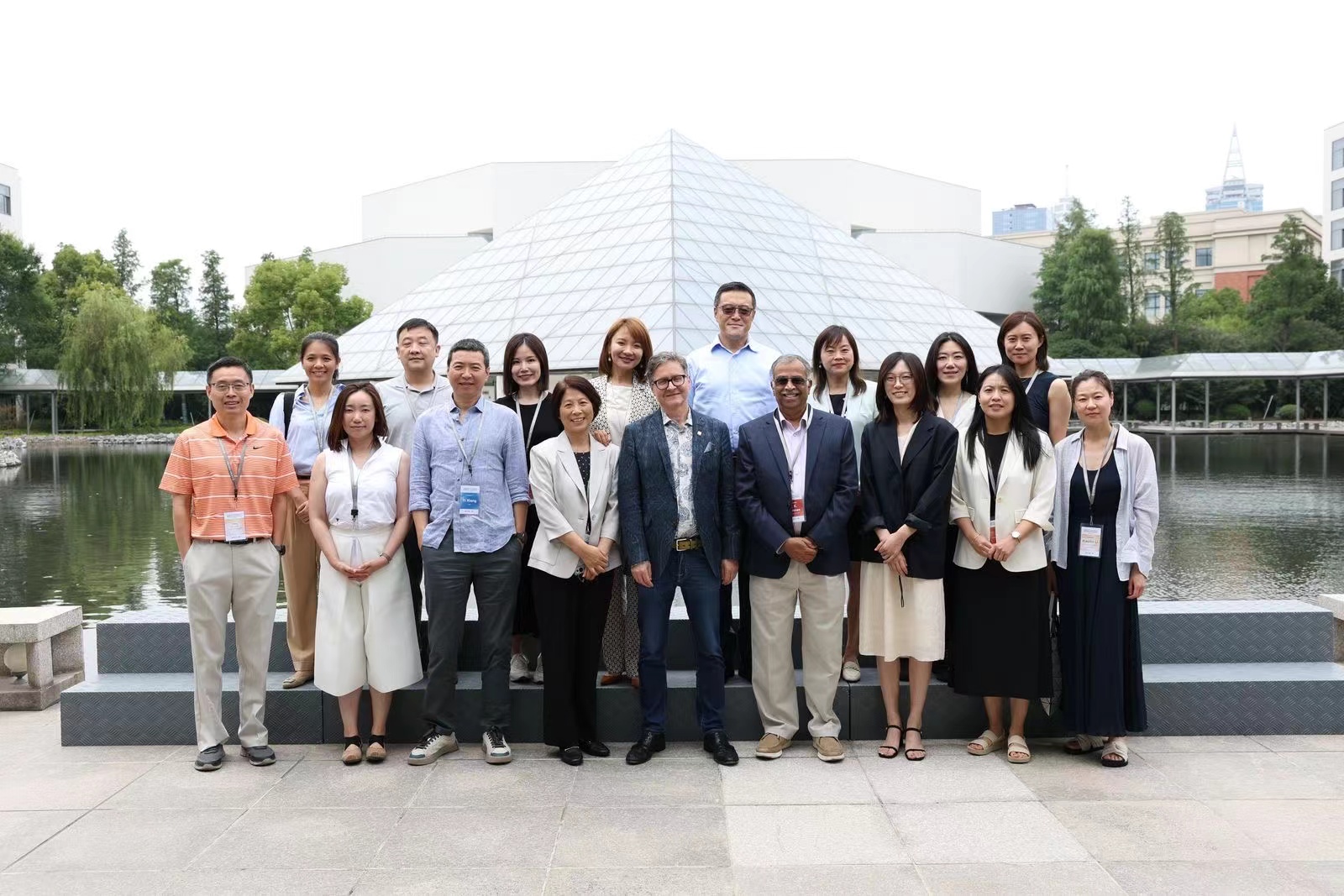CEIBS holds 30th Anniversary Marketing Symposium
July 9, 2024. Shanghai - The CEIBS 30th Anniversary Marketing Symposium was held at the CEIBS Shanghai campus on July 9, 2024, bringing together more than 70 scholars from top universities in the US, Europe, and Asia to discuss current issues and trends in the field of marketing.
The CEIBS Marketing Department’s Annual Symposium serves as a forum for academic scholars to share cutting-edge research with high implications for both theory and business practice. This year, five leading scholars from various marketing research disciplines, including analytical modelling, empirical modelling, and consumer behaviour, delivered speeches on recent papers.
In a welcome address, CEIBS Vice President and Dean Frank Bournois highlighted how the symposium echoes the school’s mission of “China Depth, Global Breadth.” He emphasised that the bringing of distinguished scholars from around the world to China to discuss issues of global significance is a testament to CEIBS' commitment to its mission.
During the one-day symposium, each paper was allocated one hour for presentation, including 15 minutes for discussion. Read on for summaries of the papers presented at the engaging and fascinating symposium.

Modelling Customer Journey with AI
Presenter: P. K. Kannan, University of Maryland
When observing a sequence of customer interactions, it is important for a firm to understand how these interactions relate to key objectives: qualified customer leads, customer conversion events, or churn. Inspired by recent development in Large Language Models (LLMs), this research proposes a transformer-based framework that models the sequence of customer interactions in a way that resembles modelling a sequence of words in a sentence. Our proposed model accounts for the varying effects of an interaction when it occurs at different times and the complex interactions between the various touchpoints on other touchpoints and events. We present an application in the multi-channel marketing context where the firm observes sequences of customer-firm encounters across multiple touchpoints. We show that our model successfully predicts the next touchpoint and the evolvement of conversion rate over time at the individual level, as well as the contribution of each touchpoint to the conversion event. By unravelling the patterns within rich customer interaction data, our model provides a useful tool to help managers better understand and manage the customer journey.
Preference Elicitation for Algorithmic Personalisation
Presenter: Phyliss Jia Gai, Peking University
Companies and platforms frequently request consumers to indicate their preferences to generate personalised content, assuming that users will reveal their full range of interests. However, a series of experiments, including several conducted on custom-built platforms, reveals that consumers often omit interests that they would otherwise select or consider when sharing their preferences with algorithms. This tendency arises because 1) consumers believe that sharing narrow preferences reduces the risk of being misclassified by algorithms, and 2) they do not adequately consider all predefined categories of interest. Two separate research projects document these distinct processes. Crucially, the preferences shared by consumers create a feedback loop: those who select narrow preferences receive less diverse recommendations, which further narrows their choices and subsequent recommendations. Our findings thus delineate the conditions under which filter bubbles are generated and dismantled, suggesting that simple yet effective design features can significantly alter the content that individuals are exposed to and engage with.
Robot or Human? Consumer Response to Humanoid Robots
Presenter: Bernd Schmitt, Columbia University
Humanoid robots are increasing resemble humans, both in appearance and behaviour. Consumers are already engaging with them as salespeople, service staff, and social companions. As these robots become ever more indistinguishable from humans, it is imperative to understand potential consumer responses and the implications for consumer behaviour and society. This presentation presents the concept of “anti-robot speciesism”, a tendency to treat robots as fundamentally different from humans, even when humans and robots are indistinguishable from each other in appearance and behaviour in consumer relevant settings. Several studies examine hypotheses related to anti-robot speciesism and demonstrate that such biases are deeply ingrained in human nature. This research thus provides insights into how speciesism could influence consumer perceptions and interactions in the era of humanoid robots.
Unravelling Multifaceted User Preferences on Content Platforms: A Bayesian Deep Learning Approach
Presenter: Jia Liu, Hong Kong University of Science and Technology
Given the increasing importance of user engagement on digital content platforms, this paper proposes a Bayesian deep learning model, called the Multi-Dynamic Neural Poisson System (MDNPS), that can capture the high-dimensional, dynamic, and multifaceted nature of user activities on such platforms. The MDNPS yields semantically interpretable factors shared across time and user activities. It quantifies user preferences at different granularity levels and adeptly captures their temporal and cross-activity dependencies. This model is scalable to large empirical data and can be inferred efficiently with a stochastic variational Bayes algorithm. We apply the MDNPS to the largest knowledge-sharing platform in China, focusing on the dynamics in user content consumption and contribution behaviours. We show that the MDNPS outperforms benchmark models in both in-sample fitting and out-sample prediction tasks (by at least 50%). Our estimated platform-level trends and individual-level dynamic preferences show rich and interpretable insights, offering valuable managerial implications for content and user management.
The Curse of Payment: When and Why High Payments Lead Consumers to Choose Low-Consumption-Utility Options
Presenter: Xilin Li, China Europe International Business School
Products with higher market value may not offer higher consumption utility. Suppose you are choosing between a higher-market-value/lower-consumption-utility product and a lower-market-value/higher-consumption-utility product, and the current prices of the two options are identical. Which will you choose? Normatively, your choice should not be influenced by the current price, because it is a constant between the options. But we predict that consumers are more likely to choose the higher-market-value/lower-consumption-utility option when the current price is high (vs. low). We dub this phenomenon “curse of payment” (paying more and enjoying less). We explain it in terms of asymmetric transaction utility, which has two components. First, consumers care not only about consumption utility, but also transaction utility. Second, the transaction-utility function is loss-averse: consumers are more motivated to avoid negative transaction utility than to seek positive transaction utility. Eight studies demonstrated the predicted effect across diverse contexts and found that the effect can occur even when the current price is non-monetary but convertible to money (e.g., time), and that the effect is stronger among financially constrained individuals. This research offers practical implications for consumers to make better product choices and marketers to make better pricing decisions.
















